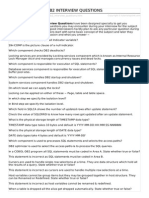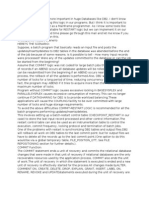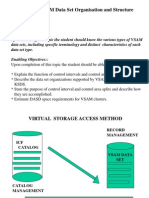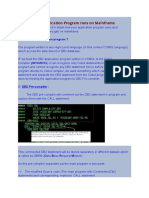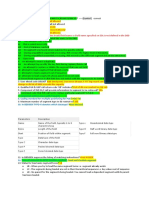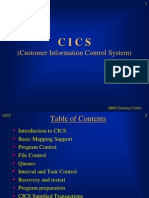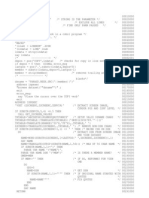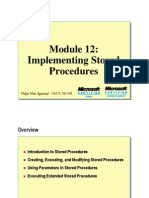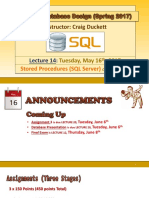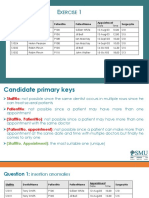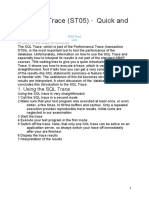0% found this document useful (0 votes)
560 views11 pagesDB2 Stored Procedures Guide
This document discusses DB2 stored procedures. It defines a stored procedure as an executable program under the control of the DB2 server that is invoked via the SQL CALL statement. It may contain business logic, parameters, and result sets. Stored procedures should be used when performance is important, there are many clients, applications involve heavy database activity but little user interaction, client code changes frequently, or client access needs control. The document reviews considerations for using stored procedures like determining the client portion, programming language, defining and coding the procedure. It provides an overview of client/server application flow and design tips for stored procedures.
Uploaded by
RIDA ERLANGGACopyright
© © All Rights Reserved
We take content rights seriously. If you suspect this is your content, claim it here.
Available Formats
Download as PPTX, PDF, TXT or read online on Scribd
0% found this document useful (0 votes)
560 views11 pagesDB2 Stored Procedures Guide
This document discusses DB2 stored procedures. It defines a stored procedure as an executable program under the control of the DB2 server that is invoked via the SQL CALL statement. It may contain business logic, parameters, and result sets. Stored procedures should be used when performance is important, there are many clients, applications involve heavy database activity but little user interaction, client code changes frequently, or client access needs control. The document reviews considerations for using stored procedures like determining the client portion, programming language, defining and coding the procedure. It provides an overview of client/server application flow and design tips for stored procedures.
Uploaded by
RIDA ERLANGGACopyright
© © All Rights Reserved
We take content rights seriously. If you suspect this is your content, claim it here.
Available Formats
Download as PPTX, PDF, TXT or read online on Scribd
/ 11



